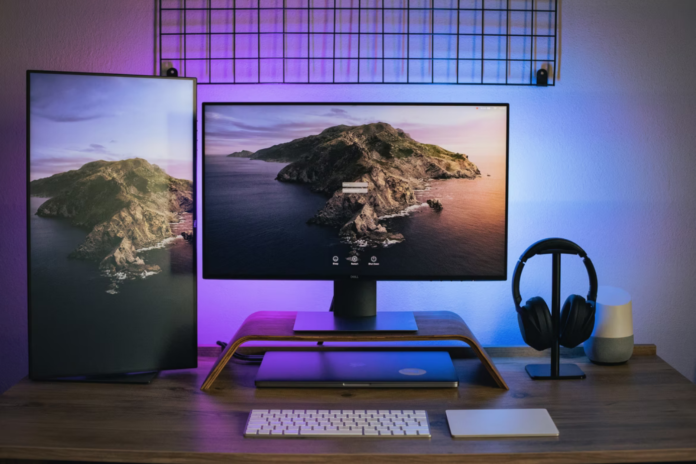Sooner or later in life, technology will become obsolete, and a new one will have to replace it. To date, many manufacturers have produced different monitor models with WQHD resolution. After all, they are really popular and affordable.
As you probably know, resolution describes the number of pixels on the screen horizontally and vertically. Thus, the more pixels, the sharper and more detailed the image. There are currently three most popular types of resolutions in the gaming world:
- Full HD (1080p)
- QHD or WQHD (1440p)
- Ultra HD (2160p or 4K)
The resolution can vary greatly depending on the aspect ratio – 16:9, 16:10, 21:9, 32:9, and so on. Nevertheless, the three types mentioned above are the most popular. And here is one of these types: WQHD.
What is WQHD resolution
WQHD is the widescreen version of QHD. That’s about it. WQHD also refers to 1440p or 2K. However, it is slightly larger – more precisely, wider – than QHD. WQHD and QHD represent the same 1440p resolution, but UW 1440p is slightly wider for widescreen use. In short, WQHD is 3440 x 1440 pixels and QHD is 2560 x 1440 pixels. WQHD has 3,440 horizontal pixels or 880 more pixels than QHD’s 2,560 horizontal pixels.
Beware of vendors advertising ultra-wide monitors as WQHD, even if they don’t have 2,560 horizontal pixels. Some may automatically claim that the monitor is WQHD resolution just because it has more horizontal pixels than QHD (but marginally) to match the 16:9 aspect ratio.
UW 1080p or WFHD (Wide FHD), an extra-wide (or slightly wider) version of standard Full HD or 1080p, uses a wider version of the resolution.
What do the pixels mean
Pixels, or image elements, are the smallest physical points on the screen and the basic components of a monitor. Thus, pixels are the building blocks of any image you see on the screen. Pixels and resolution are directly related, and the higher the resolution, the more pixels there are on the monitor screen.
To visualize this, think of pixels as pieces of a mosaic. Each one makes up a small part of the overall picture. Moreover, the more pixels on a monitor, the more detailed the images can be.
Is it better if the pixel density is higher
Well, the answer is both yes and no. While higher pixel densities bring additional benefits, there is a tipping point. As the pixel density increases, the noticeable benefits of higher pixel density get smaller and smaller. Eventually, this will cause the benefits offered by higher pixel densities to become invisible to your eye.
For example, a 25-inch monitor will have a pixel density of about 88 pixels per inch, while a 32-inch monitor will have a pixel density of about 69 pixels per inch. In this situation, it’s safe to say that there will be noticeable differences in image quality between the two, as the 25-inch display provides better images. To go even further, smartphones typically have pixel densities ranging from 300 pixels per inch to over 500 pixels per inch.





